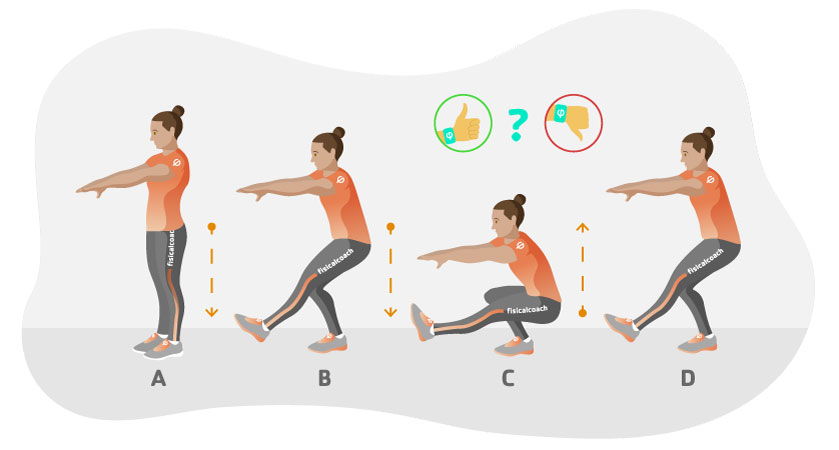
Single leg depth squat
The Single Leg Squat is a functional test commonly used in high performance sports whose objective is to measure the strength of the subject’s lower body, especially the quadriceps, hamstrings, gluteus and hip stabilizer muscles. Sometimes this test is also called the “Pistol Squat Test” due to the position the subject adopts during the test.
- Required Material: Anti-slip surface.
- Procedure: The test begins with the subject in a standing position with arms fully extended forward and hands together, as shown in the illustration A. Next, the subject should place his/her weight on the leg to be evaluated, while taking the other leg off the ground, slightly flexing the hip and keeping the other leg extended (B). From that position, the subject should squat down, flexing the knee to the maximum (deep squat), without taking the heel off the ground and without changing the position of the arms (C). The subject must then return to the starting position (A), performing a hip extension (D), thus completing the first of the 5 repetitions to be performed. The arms should form a 90º angle with the torso during the entire test.
- Assessment: The subject must perform 5 successive squats with each leg. If he/she manages to perform 3 or more squats without any problem the test is considered normal or negative. However, if the subject is unable to perform at least 3 squats correctly, the test is considered abnormal or positive. As a general rule, clinical observation should evaluate the subject’s knee and hip stability.
- Remarks: This test is used as a control within the process of RDF of injuries to know the of the subject’s recovery evolution, especially in knee cruciate ligament injuries, as well as femoro-patellar syndrome. It has been observed that there is an increase in hip adduction and knee valgus due to quadriceps and gluteal muscle weakness.
Take this test and 139 more in our App